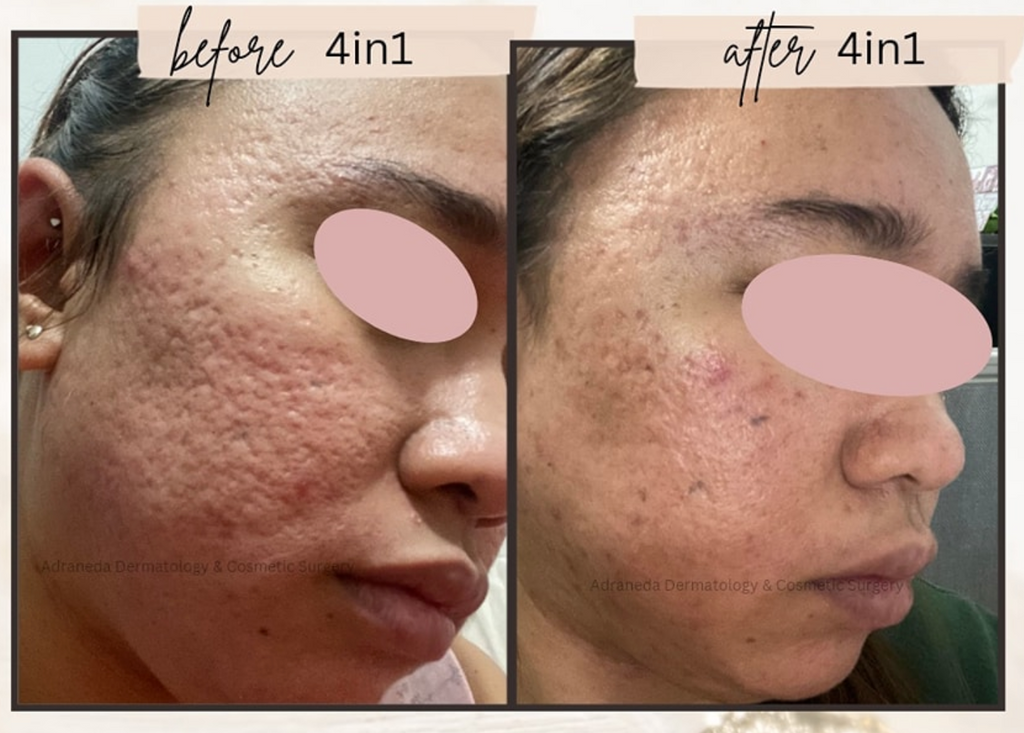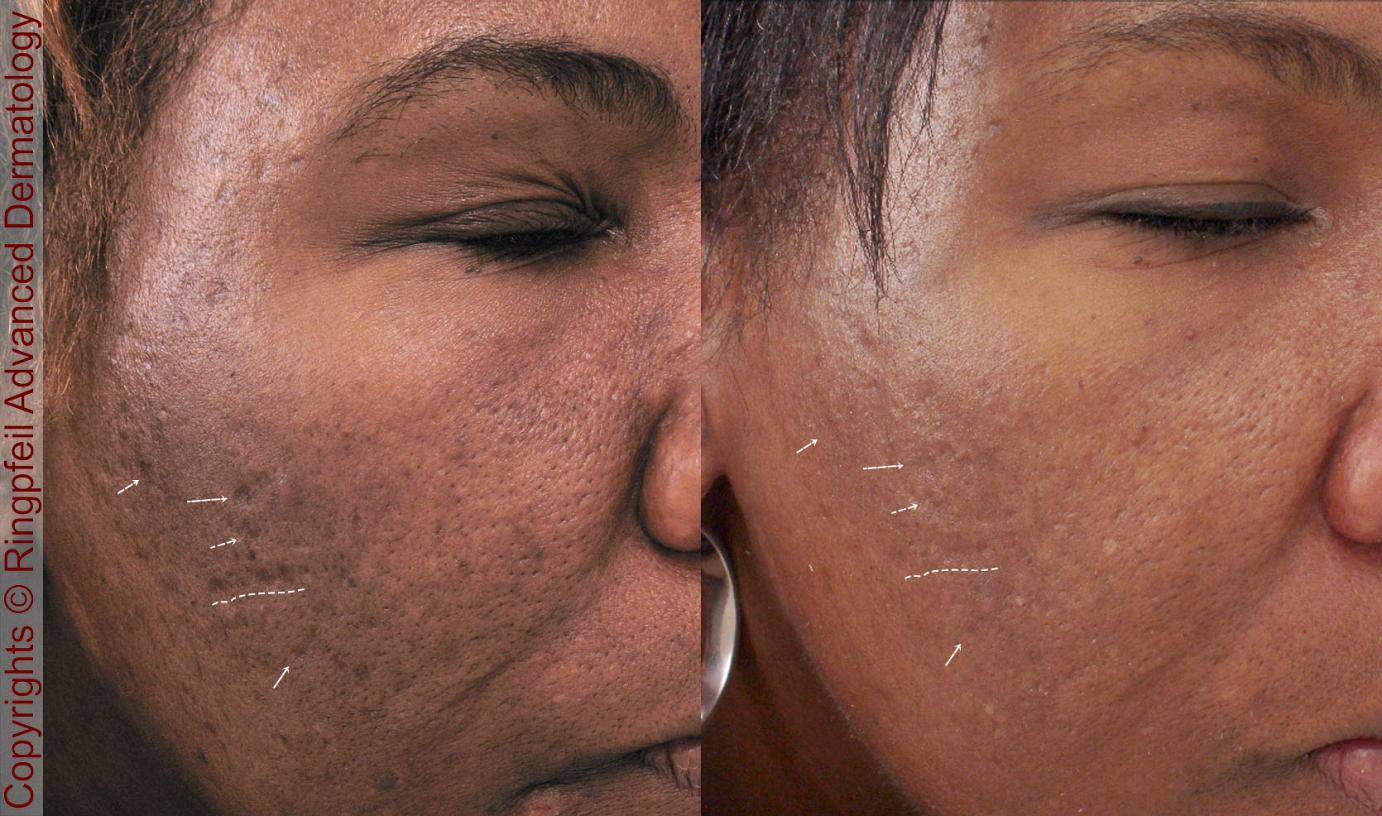Attain Smooth Skin with Specialized Acne and Acne Scars Treatment
Attain Smooth Skin with Specialized Acne and Acne Scars Treatment
Blog Article
Exploring Skin Conditions: Identifying and Treating Acne Scars for Healthier Skin
Acne marks stand for a considerable issue for individuals looking for to preserve healthy and balanced skin, as they can affect both appearance and self-confidence. Understanding the different types of scars, from atrophic to hypertrophic, is important for identifying appropriate therapy alternatives.
Recognizing Acne Marks
Comprehending acne scars is critical for any person who has actually experienced extreme acne, as these marks can have an enduring effect on both physical look and mental health. When the skin undergoes inflammatory responses throughout energetic acne sores, acne scars create. The severity of scarring is usually affected by variables such as the sort of acne, its period, and specific skin features.
The body's all-natural recovery procedure can result in either atrophic scars, which look like clinical depressions in the skin, or hypertrophic scars, which are elevated and result from overflow of collagen. Furthermore, the emotional toll of acne scars ought to not be undervalued; numerous individuals report feelings of embarrassment, anxiousness, and decreased self-esteem. This psychological concern can affect social communications and total lifestyle.
Resolving acne marks needs a detailed understanding of their development and impact. Recognition of the potential for long-term consequences connected with without treatment marks can encourage individuals to look for proper therapies. Early treatment and effective administration techniques can dramatically boost skin look and boost psychological strength, highlighting the relevance of recognizing the complexities surrounding acne scars.
Kinds of Acne Scars
Acne marks can be categorized into distinctive types, each showing distinct attributes and requiring particular treatment strategies. The main sorts of acne marks consist of atrophic, hypertrophic, and keloid scars.

Hypertrophic marks, in contrast, are raised over the skin level and are the result of extreme collagen production during the recovery procedure. They normally remain within the boundaries of the original acne lesion. Keloid scars are similar however prolong past the initial injury website, forming larger, increased areas that can be unpleasant or itchy.
Recognizing these sorts of scars is necessary for choosing proper therapy options. Different marks may react much better to specific treatments, such as laser therapies, fillers, or surgical interventions, highlighting the value of a tailored technique to acne mark administration.
Recognizing Your Scars
Acne marks normally fall right into 2 classifications: atrophic and hypertrophic marks. These can additionally be classified right into ice-pick marks, boxcar marks, and rolling scars, each showing distinct attributes and requiring various approaches for assessment - acne treatment for sensitive skin.
Hypertrophic marks, on the various other hand, are increased and occur as a result of extreme collagen production during the healing procedure. Acknowledging the details attributes of your marks-- such as depth, texture, and size-- is crucial for correct identification. In addition, think about the circulation of scars throughout your skin, as this can indicate the intensity and duration of the acne condition.
Involving with a skin doctor can supply important insights right into the nature of go right here your scars, helping in the differentiation in between various kinds. A comprehensive understanding of your scars will eventually lead to a much more customized and effective therapy plan, making certain a more clear and much healthier skin tone.
Therapy Choices Offered
Recognizing the specific kind of acne marks present on your skin lays the groundwork for checking out reliable treatment alternatives. Typical kinds of acne marks consist of atrophic (clinically depressed), hypertrophic (raised), and post-inflammatory erythema.
For atrophic marks, options such as chemical peels, microneedling, and laser resurfacing are extensively used. Chemical peels off use acids to remove the outer layer of skin, advertising brand-new cell growth. Microneedling includes tiny needles that develop micro-injuries, stimulating collagen production. Laser resurfacing targets damaged skin cells, improving structure and tone.
Hypertrophic scars can be treated with corticosteroid injections click for more to squash the mark or laser therapy to reduce soreness and improve look. acne scars. Silicone gel sheets and pressure dressings may likewise aid in taking care of increased scars
Additionally, facial fillers can temporarily fill in clinical depressions from atrophic marks, while medical excision may be appropriate for severe instances. Each treatment choice has its benefits and considerations, making it important to seek advice from with a dermatologist. They can offer personalized suggestions based on the type and seriousness of your marks, along with your skin type and general wellness.
Tips for Prevention
Efficient prevention techniques can considerably lower the possibility of establishing acne scars. Utilizing non-comedogenic products helps protect against blocked pores, which can exacerbate acne.
Staying clear of the urge to stand out or choose acne sores is essential, as this can cause deeper skin damage and increase the threat of scarring. Rather, think about utilizing a chilly compress or over the counter therapies to lower swelling and redness.
Sunlight defense is one more Your Domain Name important element of prevention; ultraviolet (UV) rays can dim scars and impede the recovery process. Using a broad-spectrum sun block with at least SPF 30 daily can protect the skin and promote also recovery.
Finally, maintaining a balanced diet abundant in antioxidants, vitamins, and minerals sustains skin health and wellness and recovery. Staying moisturized and handling tension degrees can additionally play a significant role in decreasing acne flare-ups. By applying these techniques, individuals can considerably lessen their chances of developing acne marks.

Conclusion
In conclusion, understanding and recognizing acne marks is important for reliable treatment and attaining much healthier skin. Different kinds of acne scars, consisting of hypertrophic and atrophic scars, necessitate details treatments tailored to individual needs.
The body's natural recovery procedure can result in either atrophic scars, which show up as anxieties in the skin, or hypertrophic marks, which are elevated and result from overflow of collagen. They are further divided right into three subtypes: ice pick marks, boxcar marks, and rolling scars. Acne marks usually fall into two categories: atrophic and hypertrophic marks. These can additionally be classified into ice-pick marks, boxcar scars, and rolling marks, each showing unique features and needing different strategies for analysis.
Numerous types of acne marks, consisting of atrophic and hypertrophic scars, require specific treatments tailored to specific requirements.
Report this page